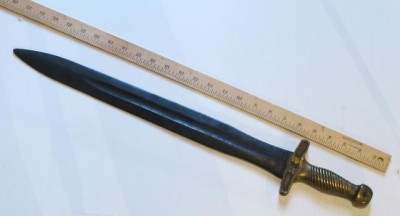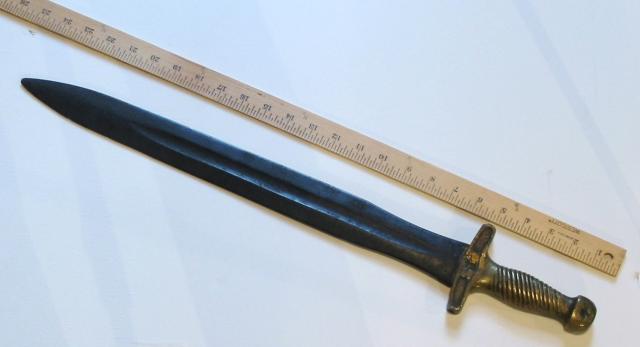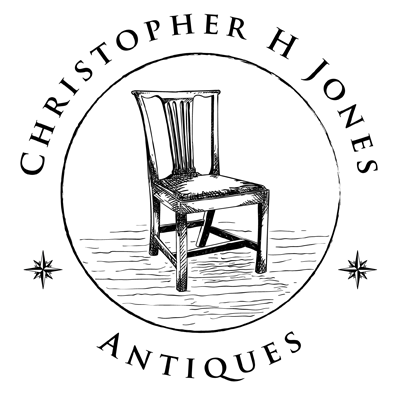 Origin: America
Origin: America
Date: 1861-1865
Dimensions: Height 24 3/8″, width 3 5/8″, depth 1″
Medium: Brass and iron
Condition: This sword survives in good condition with expected oxidation and minor pitting to the blade.
Commentary: This particular sword, with its straight, double-edged blade, was made for use during the American Civil War and is unmarked. Its brass hilt, pommel and quillons are cast as one integral unit affixed to a gently tapering smooth blade. Swords of this type were known to have been produced by a number of Southern makers including The Confederate States Armory, Wilmington, North Carolina, and E. J. Johnston & Co., Macon, Georgia, which produced one hundred and fifty of them for the Choctow Artillery. Additionally, a number of makers, whose names are unknown today, produced variations of these swords, some with a star on the pommel and the letters “CS” on the quillions, such as this example, and others quite plain. [1]
This particular shortsword model was first produced in 1832 by the Ames Manufacturing Co. of Springfield, Massachusetts, and is known as the Model 1832 Foot Artillery Sword. As a personal sidearm, it was intended for use by the regular or foot artillery regiments of the United States Army and remained in service until 1872 for use of foot artillerymen. While the design was impractical for actual combat, it is believed that artillerymen put this weapon to other uses, such as clearing brush or cutting traces. The design was based on the French foot artillery short sword of 1816, which was in turn based on the Roman gladius, the standard sidearm of the Roman legionaries. [2]
Provenance:
This sword was among the Beverley family possessions at Blandfield, Essex County, Virginia where it was prominently displayed for years on a first floor mantle. According to Beverley family oral history, the sword belonged to Captain Luther Wright who married a Beverley daughter. Wright was a member of the 47th Virginia Cavalry and was seriously wounded at the Battle of Malvern Hill. Family tradition holds that no word was received concerning Wright’s fate in the days following the battle and that he was assumed to have been killed. Distraught family members searched the battlefield and field hospitals, only a short distance from Blandfield, where they found Captain Wright alive and transported him home to recover. Much of the oral history can be confirmed by the Regimental History of the 47th Virginia Infantry which records that Luther Wright was elected Captain in 1862 and was wounded at Gaines’ Mill (a part of the Malvern Hill campaign) on June 27. He was recorded as absent in July and August. Wright returned to his unit and was again wounded in December 1862 at Fredericksburg. He resigned as Captain on April 25, 1863 due to ill health of his family and the small size of his Co.; numbering 49 men, by the time of Wright’s departure; the 47th Virginia was a veteran combat unit, having fought in eight major battles.
Notes:
1 Philip Katcher. Confederate Artilleryman 1861-1865. Oxford: Osprey Publishing, 2001, pages 31-32.
2 Wikipedia contributors, “Model 1832 Foot Artillery Sword,” Wikipedia, The Free Encyclopedia, http://en.wikipedia.org/w/index.php?title=Model_1832_Foot_Artillery_Sword&oldid=166665585 (accessed December 26, 2007).
Price: Sold


